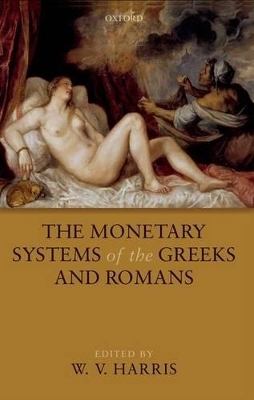
The Monetary Systems of the Greeks and Romans
Seiten
2010
Oxford University Press (Verlag)
978-0-19-958671-4 (ISBN)
Oxford University Press (Verlag)
978-0-19-958671-4 (ISBN)
This collection of new essays presents a set of debates about what money was in antiquity and how it functioned. The focus is mainly on the Greeks, who were not the original inventors of coinage but were responsible for its widespread adoption, and on the Roman Empire, which developed one of the most complex of known pre-modern economies.
Most people have some idea what Greeks and Romans coins looked like, but few know how complex Greek and Roman monetary systems eventually became. The contributors to this volume are numismatists, ancient historians, and economists intent on investigating how these systems worked and how they both did and did not resemble a modern monetary system. Why did people first start using coins? How did Greeks and Romans make payments, large or small? What does money mean in Greek tragedy? Was the Roman Empire an integrated economic system? This volume can serve as an introduction to such questions, but it also offers the specialist the results of original research.
Most people have some idea what Greeks and Romans coins looked like, but few know how complex Greek and Roman monetary systems eventually became. The contributors to this volume are numismatists, ancient historians, and economists intent on investigating how these systems worked and how they both did and did not resemble a modern monetary system. Why did people first start using coins? How did Greeks and Romans make payments, large or small? What does money mean in Greek tragedy? Was the Roman Empire an integrated economic system? This volume can serve as an introduction to such questions, but it also offers the specialist the results of original research.
W.V. Harris is Shepherd Professor of History, Columbia University
1. The Monetary Use of Weighed Bullion in Archaic Greece ; 2. What Was Money in Ancient Greece and Rome? ; 3. Money and Tragedy ; 4. The Elasticity of the Money-Supply at Athens ; 5. Coinage as 'Code' in Ptolemaic Egypt ; 6. The Demand for Money in the Late Roman Republic ; 7. Money and Prices in the Early Roman Empire ; 8. The Function of Gold Coinage in the Monetary Economy of the Roman Empire ; 9. The Nature of Roman Money ; 10. The Use and Survival of Coins and of Gold and Silver in the Vesuvian Cities ; 11. The Monetization of the Roman Frontier Provinces: A Quantitative Revision ; 12. The Divergent Evolution of Coinage in Eastern and Western Eurasia
| Erscheint lt. Verlag | 29.4.2010 |
|---|---|
| Zusatzinfo | 5 black & white illustrations |
| Verlagsort | Oxford |
| Sprache | englisch |
| Maße | 139 x 216 mm |
| Gewicht | 420 g |
| Themenwelt | Geschichte ► Allgemeine Geschichte ► Vor- und Frühgeschichte |
| Geisteswissenschaften ► Geschichte ► Regional- / Ländergeschichte | |
| Geschichte ► Teilgebiete der Geschichte ► Wirtschaftsgeschichte | |
| Wirtschaft ► Volkswirtschaftslehre ► Finanzwissenschaft | |
| ISBN-10 | 0-19-958671-3 / 0199586713 |
| ISBN-13 | 978-0-19-958671-4 / 9780199586714 |
| Zustand | Neuware |
| Haben Sie eine Frage zum Produkt? |
Mehr entdecken
aus dem Bereich
aus dem Bereich
auf den Spuren der frühen Zivilisationen
Buch | Hardcover (2023)
C.H.Beck (Verlag)
CHF 27,95
Konzepte – Methoden – Theorien
Buch | Softcover (2024)
UTB (Verlag)
CHF 55,85
Was Pompeji über uns erzählt
Buch | Hardcover (2023)
Propyläen (Verlag)
CHF 44,75


